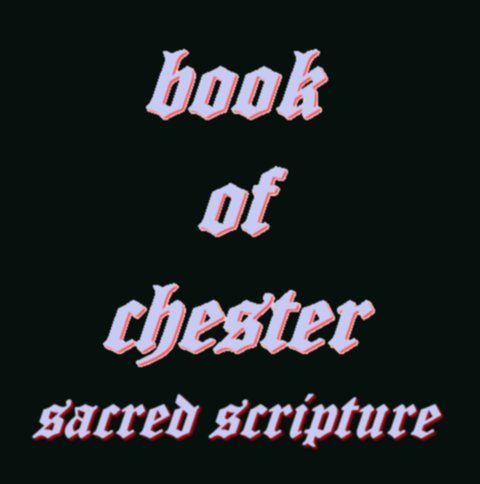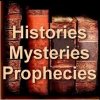
Introduction
Preface Second Ed.
Preface Third Ed.
Note by the Editor
The Two Systems
Trinity in Unity
Mother and Child
The Child in Assyria
The Child in Egypt
The Child in Greece
Death of the Child
Deification of the Child
Mother of the Child
Christmas
Easter
Nativity of John
Feast of thr Assumption
Baptismal Regeneration
Justification by Works
Sacrifice of the Mass
Extreme Unction
Purgatory and Prayers for the Dead.
Idol Processions
Relic Worship.
Clothing and Crowning of Images.
The Rosary
Lamps & Wax-candles
Sign of the Cross
Sovereign Pontiff
Priests, Monks, and Nuns.
Great Red Dragon
Beast From the Sea
Beast from the Earth
Image of the Beast
Number of the Beast
Invisible Head of the Papacy
Woman with Golden Cup
Hebrew Chronology
Shing Moo and Ma Tsoopo of China.
Ala-Mahozim
Meaning of the name Centaurus
Olenos, the Sin-Bearer
Identification of Rhea or Cybele and Venus
Virgin Mother of Paganism
Goddess Mother as a Habitation.
Meaning of the name Astarte.
Oannes and Souro
The Identity of the Scandinavian Odin and Adon of Babylon
Stripping of the Clothes of the Initiated in the Mysteries
Zoroaster, the Head of the Fire-Worshippers
Story of Phaethon
Roman Imperial Standard of the Dragon of Symbol of Fire-worship
The Slaying of the Witness
Attes, the Sinner
Click here for The Reluctant Messenger (Host Site)
APPENDIX - The Goddess Mother as a Habitation.
NOTE I, p. 77. The Goddess Mother as a Habitation.
What could ever have induced mankind to think of calling the great Goddess-mother, or mother of gods and men, a House or Habitation? The answer is evidently to be found in a statement made in Gen. ii. 21, in regard to the formation of the mother of mankind: "And the Lord caused a deep sleep to fall upon Adam, and he slept, and he took one of his ribs, and closed up the flesh instead thereof. And the rib which the Lord God had taken from man, made (margin, literally BUILDED ) he into a woman." That this history of the rib was well known to the Babylonians, is manifest from one of the names given to their primeval goddess, as found in Berosus (lib. i. p. 50). That name is Thalatth. But Thalatth is just the Chaldean form of the Hebrew Tzalaa, in the feminine,--the very word used in Genesis for the rib, of which Eve was formed; and the other name which Berosus couples with Thalatth, does much to confirm this; for that name, which is Omorka, * just signifies "The Mother of the world." When we have thus deciphered the meaning of the name Thalatth, as applied to the "mother of the world," that leads us at once to the understanding, of the name Thalasius, * applied by the Romans to the god of marriage, the origin of which name has hitherto been sought in vain. Thalatthi signifies "belonging to the rib," and, with the Roman termination, becomes Thalatthius or "Thalasius, the man of the rib." And what name more appropriate than this for Adam, as the god of marriage, who, when the rib was brought to him, said, "This is now bone of my bones, and flesh of my flesh: she shall be called Woman, because she was taken out of man." At first, when Thalatth, the rib, was builded into a woman, that "woman" was, in a very important sense, the "Habitation" or "Temple of God;" and had not the Fall intervened, all her children would, in consequence of mere natural generation, have been the children of God. The entrance of sin into the world subverted the original constitution of things. Still, when the promise of a Saviour was given and embraced, the renewed indwelling of the Holy Spirit was given too, not that she might thereby have any power in herself to bring forth children unto God, but only that she might duly act the part of a mother to a spiritually living offspring--to those whom God of his free grace should quicken, and bring from death unto life. Now, Paganism willingly overlooked all this; and taught, as soon as its votaries were prepared for receiving it, that this renewed indwelling of the spirit of God in the woman, was identification, and so it deified her. Then Rhea, "the gazer," the mother of mankind, was identified with Cybele "the binder with cords," or Juno, "the Dove," that is, the Holy Spirit. Then, in the blasphemous Pagan sense, she became Athor, "the Habitation of God," or Sacca, or Sacta, "the tabernacle" or "temple," in whom dwelt "all the fulness of the Godhead bodily." Thus she became Heva, "The Living One;" not in the sense in which Adam gave that name to his wife after the Fall, when the hope of life out of the midst of death was so unexpectedly presented to her as well as to himself; but in the sense of the communicator of spiritual and eternal life to men; for Rhea was called the "fountain of the blessed ones." * The agency, then, of this deified woman was held to be indispensable for the begetting of spiritual children to God, in this, as it was admitted, fallen world. Looked at from this point of view, the meaning of the name given to the Babylonian goddess in 2 Kings xvii. 30, will be at once apparent. The name Succoth-benoth has very frequently been supposed to be a plural word, and to refer to booths or tabernacles used in Babylon for infamous purposes. But, as observed by Clericus (lib. i. De Chaldoeis, sect. 2, cap. 37), who refers to the Rabbins as being of the same opinion, the context clearly shows that the name must be the name of an idol: (ver. 29, 30), "Howbeit every nation made gods of their own, and put them in the houses of the high places which the Samaritans have made, every nation in their cities wherein they dwelt. And the men of Babylon made Succoth-benoth." It is here evidently an idol that is spoken of; and as the name is feminine, that idol must have been the image of a goddess. Taken in this sense, then, and in the light of the Chaldean system as now unfolded, the meaning of "Succoth-benoth," as applied to the Babylonian goddess, is just "The tabernacle of child-bearing." * When the Babylonian system was developed, Eve was represented as the first that occupied this place, and the very name Benoth, that signifies "child-bearing," explains also how it came about that the Woman, who, as Hestia or Vesta, was herself called the "Habitation," got the credit of "having invented the art of building houses" (SMITH, sub voce "Hestia").
Benah, the verb, from which Benoth comes, signifies at once to "bring forth children" and "to build houses;" the bringing forth of children being metaphorically regarded as the "building up of the house," that is, of the family.
While the Pagan system, so far as a Goddess-mother was concerned, was founded on this identification of the Celestial and Terrestial mothers of the "blessed" immortals, each of these two divinities was still celebrated as having, in some sense, a distinct individuality; and, in consequence, all the different incarnations of the Saviour-seed were represented as born of two mothers. It is well known that Bimater, or Two-mothered, is one of the distinguishing epithets applied to Bacchus. Ovid makes the reason of the application of this epithet to him to have arisen from the myth, that when in embryo, he was rescued from the flames in which his mother died, was sewed up in Jupiter's thigh, and then brought forth at the due time. Without inquiring into the secret meaning of this, it is sufficient to state that Bacchus had two goddess-mothers; for, not only was he conceived by Semele, but he was brought into the world by the goddess Ippa (PROCLUS in Timoeum, lib. ii. sec. 124, pp. 292, 293). This is the very same thing, no doubt, that is referred to, when it is said that after his mother Semele's death, his aunt Ino acted the part of a mother and nurse unto him. The same thing appears in the mythology of Egypt, for there we read that Osiris, under the form of Anubis, having been brought forth by Nepthys, was adopted and brought up by the goddess Isis as her own son. In consequence of this, the favourite Triad came everywhere to be the two mothers and the son. In WILKINSON, vol. vi., plate 35, the reader will find a divine Triad, consisting of Isis and Nepthys, and the child of Horus between them. In Babylon, the statement of Diodorus (lib. ii. p. 69) shows that the Triad there at one period was two goddesses and the son--Hera, Rhea, and Zeus; and in the Capitol at Rome, in like manner, the Triad was Juno, Minerva, and Jupiter; while, when Jupiter was worshipped by the Roman matrons as "Jupiter puer," or "Jupiter the child," it was in company with Juno and the goddess Fortuna (CICERO, De Divinatione, lib. ii. cap. 41, vol. iii. p. 77). This kind of divine Triad seems to be traced up to very ancient times among the Romans; for it is stated both by Dionysius Halicarnassius and by Livy, that soon after the expulsion of the Tarquins, there was at Rome a temple in which were worshipped Ceres, Liber, and Libera (DION, HALICARN., vol. i. pp. 25, 26; and LIVY, vol. i. p. 233).
Previous | Next
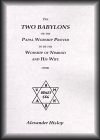
or The Papal Worship Proved to be the Worship of Nimrod and His Wife
$3.99 Kindle eBook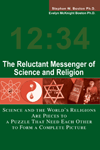
Buy from Amazon.com
The Essential Teachings of Herbert W. Armstrong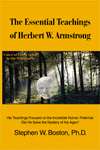
His Teachings Focused on The Incredible Human Potential. Did He Solve the Mystery of the Ages?
New Book about HWA's Teachings. Recommended!

